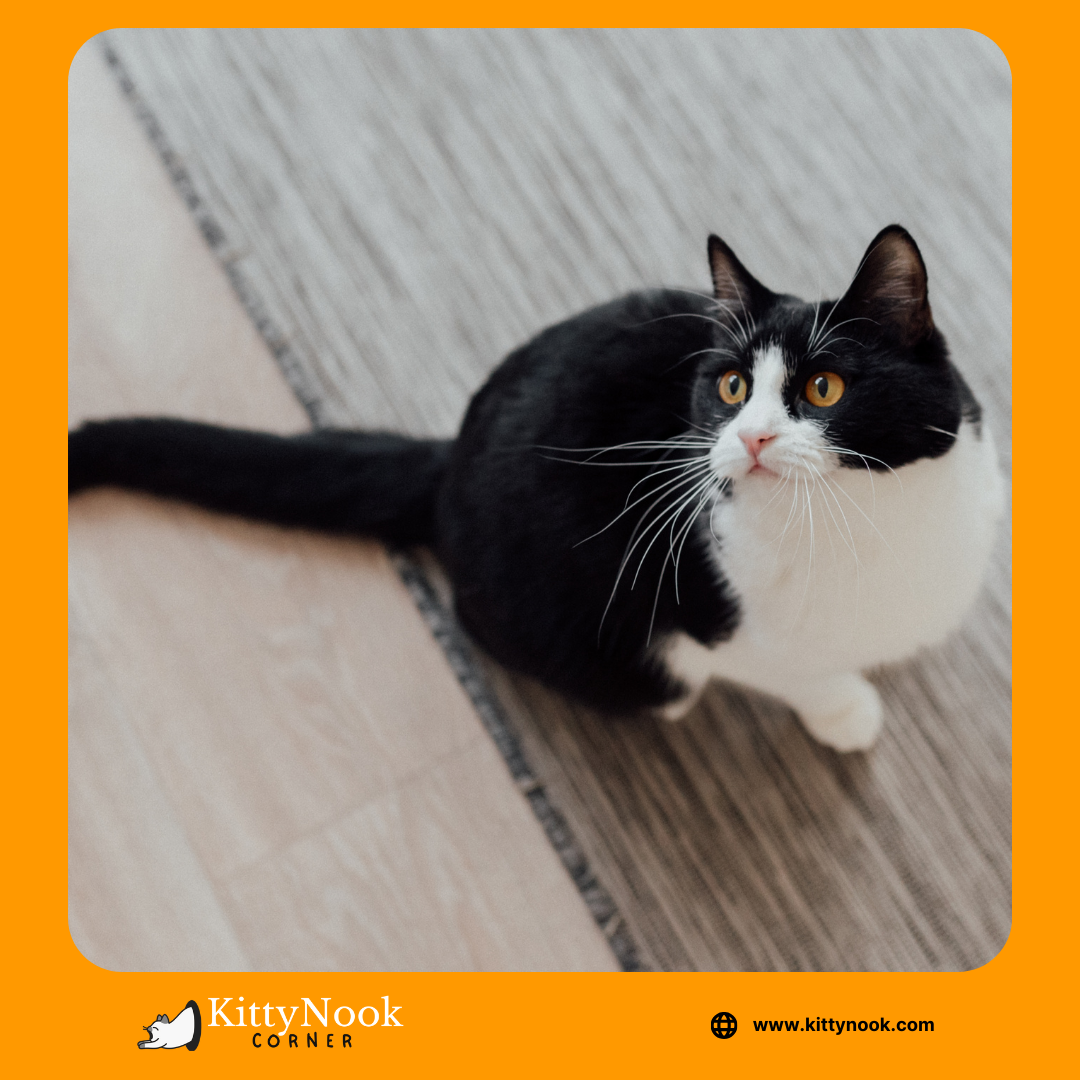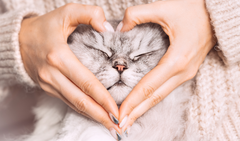Tuxedo cats, with their distinctive black and white coat patterns resembling a formal tuxedo, have captured the hearts of cat enthusiasts worldwide. Most of us picture these dapper cats as black and white, but these stunning felines' hair can likewise be gray, silver, orange, and even tortoiseshell with spots of white. However, there's a lot more to tuxedo cats than their looks!
For instance, the wealthiest feline in the world was a tuxedo cat. And some tuxedo felines have been to war, the top of Mount Everest, and the White House!
Do you want to discover more about these adorable fellows? Today we explore the fascinating world of these dapper cats, their unique characteristics, history, care, and more.
What Are Tuxedo Cats?

Also known as "tuxies," these domestic cats are characterized by their predominantly black coat, accented by white patches on their chest, paws, face, and sometimes belly. This distinctive black-and-white coloration resembles a tuxedo with a dapper bowtie, making them stand out in the feline world.
What Breed of Cat Is a Tuxedo?

Tuxedo is not a specific breed of cat but rather a coat pattern. Tuxedo cats can belong to various breeds or be domestic mixed-breed cats. This means you can find tuxedo-patterned cats among breeds like the American Shorthair, British Shorthair, Maine Coon, and more, as well as in cats of unknown lineage. The tuxie pattern is a beautiful variation that can appear in various cat breeds and mixed-breed cats.
What Is Special About Tuxedo Cats?

These cats are truly unique in the feline world. What makes them special is their striking coat pattern, which resembles a tuxedo, complete with a bowtie-like chest marking. This distinctive appearance sets them apart and often draws admirers. Beyond their looks, tuxies are known for their charming and friendly personalities. Owners of tuxedo cats often described them as intelligent, playful, and affectionate. They form strong bonds with their human companions. This combination of striking aesthetics and delightful personalities makes tuxedo cats particularly special.
A Brief History

The origins of tuxies are shrouded in mystery, but their striking appearance has earned them a place in both folklore and pop culture. These cats have been celebrated in various forms, from literature to film, often depicted as elegant and mysterious companions.
Tuxedo Cats Were Worshipped in Ancient Egypt
It's common knowledge that cats were highly adored and revered as gods by the old Egyptians. Several Egyptian sirens were portrayed as cats. Because of this, cats made frequent appearances in Egyptian tombs, goldsmithing, and hieroglyphics. Don't you know many felines portrayed in these old burial places were tuxedo cats? Yep, Tuxies were among the most popular worshipped cats in ancient times.
Tuxedo Cats Have Magical Powers ... Perhaps
Due to their coloring, tux felines seem invisible throughout a diurnal equinox. Entirely ignoring the physics of light and darkness, some think this is evidence of Tuxies' magical powers!
Well-Known Tuxedo Cats

Throughout history and popular culture, tuxedo cats have left their mark. From the iconic "Sylvester" in Looney Tunes to the mysterious "Figaro" in Disney's Pinocchio, these feline friends have charmed their way into our hearts. Their captivating presence continues to make them beloved characters in books, movies, and social media.
Tuxedo Felines with Some Significant Historic Credentials:
- Sir Isaac Newton, Beethoven, and even William Shakespeare had tuxedo kitties. That may well prove the level of artistic and scientific ideas these kitties inspired!
- Famous Tuxedo cats in pop culture, like Sylvester the cat from Looney Tunes, the Cat in the Hat (famously written by Dr. Seuss), as well as Mr. Mistoffelees from the Broadway production "Cats," were all tuxies.
- In 2012, a tuxie cat called Tuxedo Stan from Halifax, Canada, ran for mayor of his fair city. And while Stan didn't take office, he was the only feline to compete in the country's political office.
- The "Richest Feline in the World" Is a Tux. In 1998, a coat feline called Blackie acquired 12.5 million bucks when his proprietor died, making him much more prosperous than any other cat and human being.
Tuxies That Have Gone Where No Feline Has Gone Before
- A tuxie cat called Simon fought throughout World War II and received a medal for his achievements. How did he aid the Allies, you might ask? By protecting food supplies from mice and other parasites.
- Only one cat has ever made it to the top of Mount Everest—and you guessed it—he was a tuxedo. His human brought him, of course, yet it's still pretty awesome, right?
- And yes, a tuxie also made it into the White House. Former President Bill Clinton had a tuxie called Socks (1989-2009) that resided in the White Home from 1993 to 2001, throughout Clinton's term as President of the United States.
So What Causes Their Bi-Colored Coats?

A bicolor or piebald cat has white hair combined with a few other colors, for example, black. Tuxedo cats' color genes cause their coat variations. A bicolor cat has different patterns, ranging from a Turkish Van pattern to a solid color with a white chest or white spotting similar to a throat "locket" in their chest area.
The Turkish Van is an excellent example of a common bicolor cat. Van pattern is known to animal geneticists as the Seychelles (Seychellois) pattern and is categorized into three types:
- Seychellois Neuvieme is white with a tinted tail and head sprinkles (traditional Turkish Van pattern).
- Seychellois Huitieme is white with a colored tail, and head dashes with additional splashes of color on the legs.
- Seychellois Septieme is white with splashes on the legs and the body, similar to those on the head and tail.
Their bi-colored coats were believed to result from "sluggish" or "slow-moving" pigment cells that could not reach all parts of the feline embryo before ultimately forming. However, a more current study debunks this long-accepted theory. Researchers believe pigment cells move arbitrarily throughout the embryo's development and do not comply with specific hereditary directions for coat shade.
Although calico, tortoiseshell, and tuxedo felines do share some genetic resemblances that establish their markings, there's one significant difference: most calico and tortoiseshell cats are female (thanks to the same genetic code that produces their coat colors), but the number of male and female tuxedo cats are equal.
Are Tuxedo Cats Rare?

These dapper cats are not considered rare, but their prevalence can vary by region and population. The tuxedo markings are relatively common among domestic cats, making them more accessible than some rare breeds. It's not unusual to come across tuxedo-patterned cats in animal shelters or as loving companions in homes. However, while they are not rare in the general sense, finding a tuxie with specific qualities or markings you desire might require patience and searching, as each cat is unique.
Are Tuxedo Cats the Friendliest?

Tuxies are known for their charming and affectionate personalities, but whether they are the friendliest depends on individual temperament rather than coat color. While many tuxedo cats are friendly and pleasant, it's important to remember that various factors, including early socialization, upbringing, and genetics, influence a cat's disposition. Some might be more outgoing and extroverted, while others might be reserved. When adopting or caring for a cat, it's essential to consider their personality rather than relying solely on coat color to indicate friendliness.
Caring for Your Tuxedo Cat

Proper care is crucial to ensure the health and happiness of your tuxedo cat. Regular grooming, a balanced diet, and routine veterinary check-ups are key aspects of their care. Tuxies are playful by nature, so providing them with toys and interactive playtime is crucial for their mental and physical well-being. Additionally, they thrive on human interaction, so don't be surprised if your tuxedo cat insists on being the center of attention.
Last Words
These cats are more than just a striking tuxedo pattern; they are intelligent, affectionate, and captivating companions. A tuxie cat might be the perfect choice if you consider adding a feline friend to your family. Their charming appearance and delightful personalities will bring joy to your life, making them a truly special addition to any household.
This blog is updated on September 2023.





















